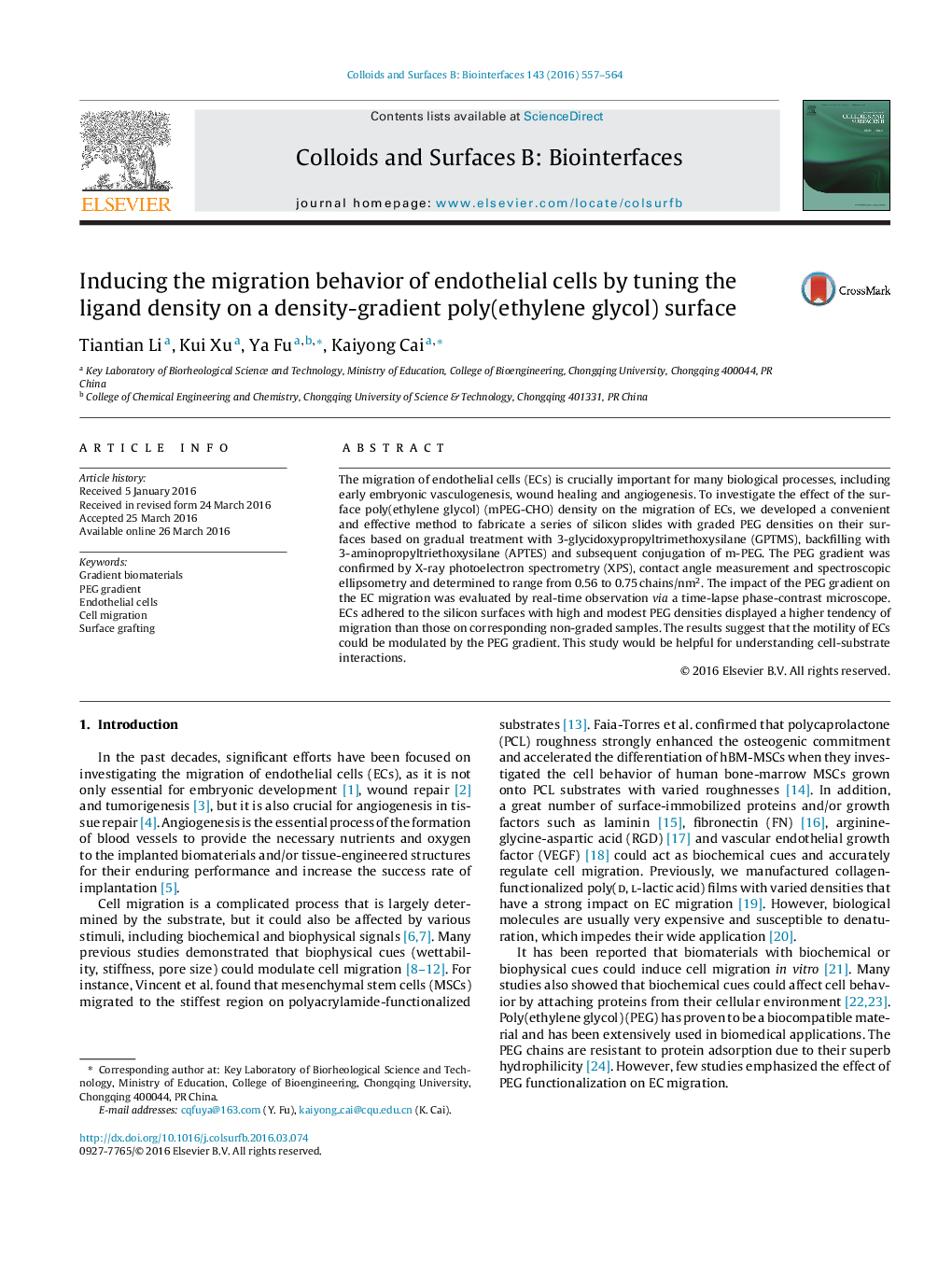| Article ID | Journal | Published Year | Pages | File Type |
|---|---|---|---|---|
| 599080 | Colloids and Surfaces B: Biointerfaces | 2016 | 8 Pages |
•A continuous amino density gradient is constructed onto silicon slides surfaces.•Density gradient of poly(ethylene glycol) (mPEG-CHO) is then formed on the amino density gradient surfaces.•The PEG density gradient induces the migration of endothelial cells.
The migration of endothelial cells (ECs) is crucially important for many biological processes, including early embryonic vasculogenesis, wound healing and angiogenesis. To investigate the effect of the surface poly(ethylene glycol) (mPEG-CHO) density on the migration of ECs, we developed a convenient and effective method to fabricate a series of silicon slides with graded PEG densities on their surfaces based on gradual treatment with 3-glycidoxypropyltrimethoxysilane (GPTMS), backfilling with 3-aminopropyltriethoxysilane (APTES) and subsequent conjugation of m-PEG. The PEG gradient was confirmed by X-ray photoelectron spectrometry (XPS), contact angle measurement and spectroscopic ellipsometry and determined to range from 0.56 to 0.75 chains/nm2. The impact of the PEG gradient on the EC migration was evaluated by real-time observation via a time-lapse phase-contrast microscope. ECs adhered to the silicon surfaces with high and modest PEG densities displayed a higher tendency of migration than those on corresponding non-graded samples. The results suggest that the motility of ECs could be modulated by the PEG gradient. This study would be helpful for understanding cell-substrate interactions.
Graphical abstractThe study reports an approach for the fabrication of linear gradient of poly(ethylene glycol) (PEG) density varying from 0.56 to 0.75 chains/nm2 onto a silicon substrate with pump-assistance injection. The PEG density-gradient mediates the alignment and migration of endothelial cells.Figure optionsDownload full-size imageDownload as PowerPoint slide
